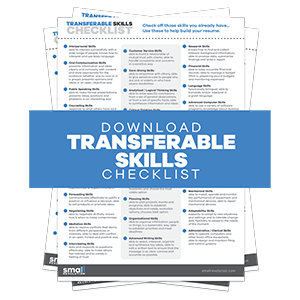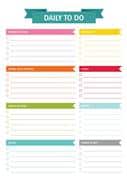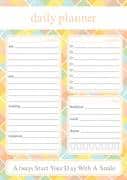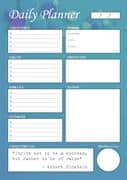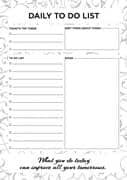There are times you may feel overwhelmed by your daily tasks and it seems there are not enough hours in a day. Everyday duties become tedious and you may simply forget to do something.
It could be to take out the rubbish or prepare for a meeting, but some tasks are essential and can have negative impacts if forgotten.
This is especially true when working from home because you have to juggle a variety of different duties.
But worry not!
Using a mind map to represent tasks related to work and home life is a sure way to help you prioritize your duties as well as storing a lot of information in a simple format.
What Is a Mind Map?
Mind maps are diagrams that illustrate information in an easy to understand format. They allow you to use creative processes in combination with the logical part of your brain.
Instead of using dull and uninspired lists, mind maps help organize information in a creative, simplified format.
Developed by psychologist Tony Buzan, this visual thinking technique was created while he was at university in the 60s. Buzan developed mind maps “as a way of helping students make notes that used only key words and images”.
Mind maps are supposed to mimic the way the brain works and how we think, in contrast to traditional note taking techniques.
The science behind mind mapping is that the brain will naturally scan a whole document in a non-linear fashion instead of left to right and top to bottom.
The common feature of most mind maps is the central structure from which images, lines and text radiate.
There is also extensive use of colors and symbols. They often resemble trees while some are referred to as spider diagrams.
Mind maps have had a positive impact on millions of people worldwide, and even resulted in Buzan being nominated for a Nobel Peace Prize.
The reason for the nomination was that mind mapping “helps individuals to find their global vision, their purpose in life, and therefore creating more peacefulness, more enthusiasm, more creativity, more forward-moving individuals, more multiple intelligent thinking”.
Listen to this inspirational man explain it himself:
Tony Buzan Explains the Importance and Methods of Mind Mapping
Now just imagine the impact mind mapping can have on your personal and work life.
Top 5 Advantages of Using Mind Maps
A 2017 survey showed that 50.2% of interviewees used mind maps to create to-do lists, while 36.9% stated that mind maps helped them in their decision-making process.
There is no denying that there are numerous advantages to using mind maps, especially when organizing your daily life and helping you deal with distractions when working from home.
1. Summarize information
Mind maps give access to information on a single piece of paper, which works to organize overwhelming thoughts. By using a simple format, you are able to follow your thoughts instead of trying to recall numerous small details.
2. Improve your memory
Many busy people tend to forget minor things – be it an item at the grocery store or documents from school or work. By using association and imagination when creating mind maps, memory is improved and recollection of tasks is made easier.
One study found that using mind maps helps to boost retention by 10-15%, which increases your overall quality of life.
3. Prioritize tasks
With only so many hours in a day, it is necessary to prioritize tasks in order of importance. Mind maps help you do this through the use of colors and images that reflect the importance of various obligations.
4. Maximize your schedule
There may be activities that you would like to do, but simply cannot find the time for.
By seeing the hours available in your day, you may be able to include more productive habits, such as exercising or educating yourself.
5. Aid in planning
Mind maps help to gather all relevant information in one place and organize it. This will help to plan your time and your projects, ultimately being more productive.
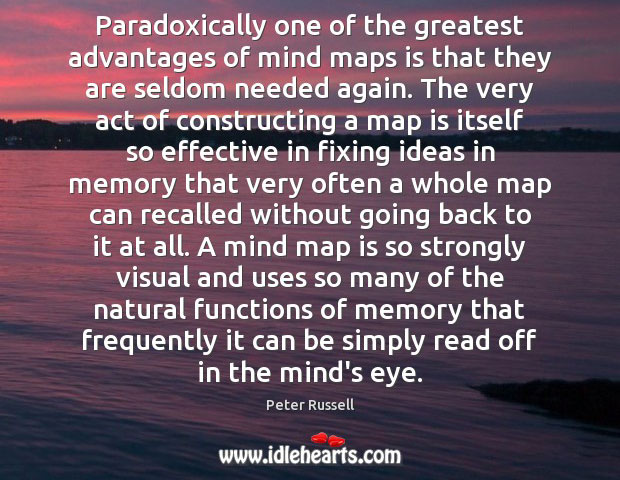
3 Easy Steps to Drawing a Daily Task Mind Map
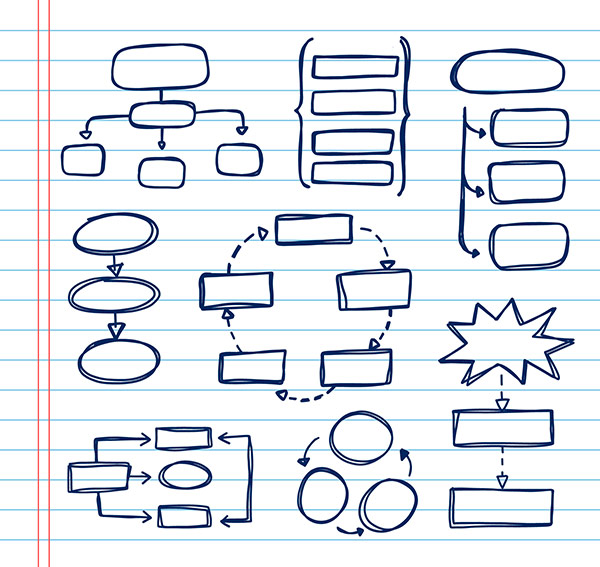
Even though there are numerous internet applications that can help you create mind maps, the more traditional method requires plain paper and coloured pencils or pens.
When creating a daily task mind map, you need to create various branches with times allocated to each. These 3 steps explain how to create a simple mind map to organize your day.
Step 1 – Create the main branches
Divide your day into sections based on what you need to do at a specific time. Begin by drawing a circle with the day of the week in the centre. Leave enough space around the circle to draw lines radiating from the centre circle. Segment the day into hours, for example, 6:00 am – 8:00 am.
Step 2 – Add sub-categories
Create sub-categories connected to each time and the tasks involved. These can include duties such as 6:00 am – 8:00 am – wake up, make bed, shower, dress, eat breakfast. 8:00 am – 8:45 am – listen to motivational speeches. 8:45 am – 9:00 am – organize work station & check emails.
You can use bold writing or different colours to show which activities are more important or urgent and try to use short key words to describe the tasks.
Step 3 – Include images & symbols
Images can replace words and they work to minimize the amount of text and clutter in your mind map. They also make it more interesting to look at, creating a more vibrant visual.
5 Most Effective Mind Map Templates
There are various types of mindmaps which serve different purposes. The 5 most popular types of mind maps are:
1. Tree/hierarchical mind maps
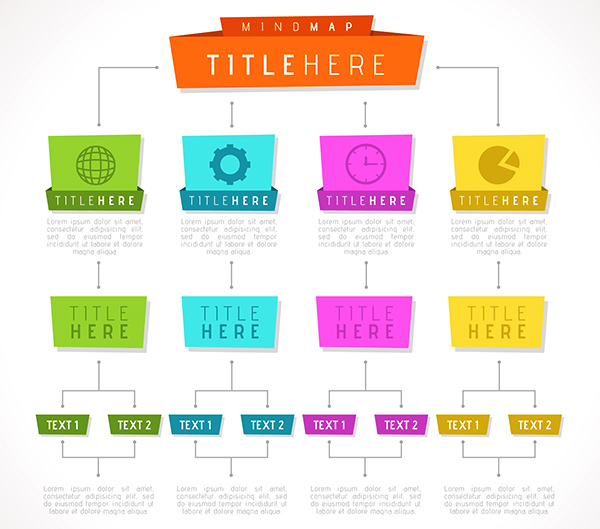
These are usually displayed in the form of a tree, with major categories radiating from the top downward. Sub categories are connected to the major categories and they expand with supporting ideas.
You can write the day of the week at the top of your page, then different time categories below, followed by the specific tasks to be performed at that time.
2. Multi flow map
This is a flow chart that is used to visualize a process or workflow in terms of cause and effect. It is usually a step-by-step approach to completing tasks.
Flow maps are created by connecting a central box to boxes on either side. Arrows flow from one end to the other to create a cross functional chart, either oriented horizontally or vertically.
3. Brace/converging map
A brace map is used to chunk objects into their individual components. This can be used to break down daily tasks into each specific role. Start by writing each broad task on the left side, followed by a bracket dividing the task into the categories that are necessary to complete it.
4. Circle map
This map can be used to define certain tasks that often involve more complex processes. It is created by writing the main idea in the center of the page and drawing a circle around it.
Brainstorm other ideas related to the central idea and draw a larger circle around everything. Keep expanding the circles with more ideas and each consecutive circle is filled with ideas related to the previous layer.
5. Bubble map
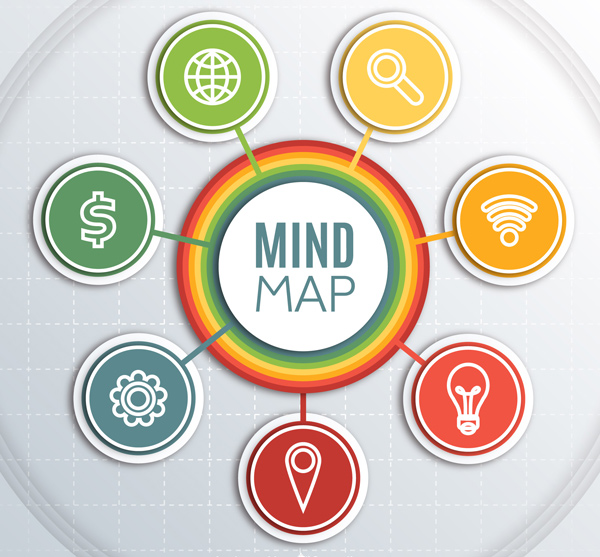
A bubble map helps you organize and classify complex tasks. It is created by drawing a large center circle, with smaller circles surrounding it.
Use verbs, adjectives and small phrases to define specific tasks. This is one of the most common and simplest mind maps to draw.
Useful Online Mind Map Applications
Although we have looked at how to create a traditional hand-written mind map, there are numerous applications that offer different templates for creating the mind map of your choice. These include:
1. Canva
This easy-to use mind map maker lets you access professionally designed templates that can be shared, downloaded or embedded in your documents.
2. Template Lab
This is a website that offers free downloadable templates you can print and fill in on a daily basis.
3. Venngage
This website categorizes mind maps in terms of usage, such as simple mind map templates and brainstorming templates. Some of these are free while others require a small fee.
4. MindMaster
This application by eDraw has received rave reviews about the convenience of the downloadable tool with people using it for both their work and personal lives. It offers clipart images, themes and different templates.
These can be edited online and they make it easier for you to make a daily task planner at the beginning of each day.
Combining Mind Maps and Online Work
Mind maps are especially helpful for online work as they help you to keep track of all the many aspects that form part of one project.
A little tip: Along with mind maps, you can use Small Revolution’s Daily Task Templates as well as these tips to create a regular work from home routine.
When working remotely, it’s pretty easy to get distracted by other activities. Setting out your daily tasks in a mind map will ensure that you use your day in the most productive manner.
Another tip: Learn how to avoid distractions and create a regular working routine with Small Revolution’s course on Successful Behaviours and Habits. By completing this course, you will have the advantage of being able to combine your knowledge of mind maps with practical skills.
Similarly, the 7 Habits for Online Success Course is aimed at providing you with the tools to develop a healthy work ethic and communication skills. It also explores the concept of ‘working smart versus working hard’, which will put more time and money in your pocket.
The steps outlined in this course can all be used as part of a ‘general’ mind map that you can refer to as an online worker when you embark on a new project. This allows you to achieve your goals without being excessively stressed out.
Daily tasks, especially for those who need to be able to designate their own working hours, need not be a hindrance to success.
Use your tasks as stepping stones to the advancement of your online career, helping to improve your life.


